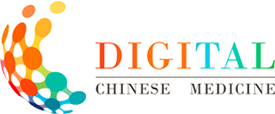Abstract:
ObjectiveTo construct a Nomogram model for the prediction of essential hypertension (EH) risks with the use of traditional Chinese medicine (TCM) syndrome elements principles in conjunction with cutting-edge biochemical detection technologies.
MethodsA case-control study was conducted, involving 301 patients with essential hypertension in the hypertensive group and 314 without in the control group. Comprehensive data, including the information on the four TCM diagnoses, general data, and blood biochemical indicators of participants in both groups, were collected separately for analysis. The differentiation principles of syndrome elements were used to discern the location and nature of hypertension. One-way analysis was carried out to screen for potential risk factors of the disease. Least absolute shrinkage and selection operator (LASSO) regression was used to identify factors that contribute significantly to the model, and eliminate possible collinearity problems. At last, multivariate logistic regression analysis was used to both screen and quantify independent risk factors essential for the prediction model. The “rms” package in the R Studio was used to construct the Nomogram model, creating line segments of varying lengths based on the contribution of each risk factor to aid in the prediction of risks of hypertension. For internal model validation, the Bootstrap program package was utilized to perform 1000 repetitions of sampling and generate calibration curves.
ResultsThe results of the multivariate logistic regression analysis revealed that the risk factors of EH included age, heart rate (HR), waist-to-hip ratio (WHR), uric acid (UA) levels, family medical history, sleep patterns (early awakening and light sleep), water intake, and psychological traits (depression and anger). Additionally, TCM syndrome elements such as phlegm, Yin deficiency, and Yang hyperactivity contributed to the risk of EH onset as well. TCM syndrome elements liver, spleen, and kidney were also considered the risk factors of EH. Next, the Nomogram model was constructed using the aforementioned 14 risk predictors, with an area under the curve (AUC) of 0.868 and a 95% confidence interval (CI) ranging from 0.840 to 0.895. The diagnostic sensitivity and specificity were found to be 80.7% and 85.0%, respectively. Internal validation confirmed the model’s robust predictive performance, with a consistency index (C-index) of 0.879, underscoring the model’s strong predictive ability.
ConclusionBy integrating TCM syndrome elements, the Nomogram model has realized the objective, qualitative, and quantitative selection of early warning factors for developing EH, resulting in the creation of a more comprehensive and precise prediction model for EH risks.









 下载:
下载: